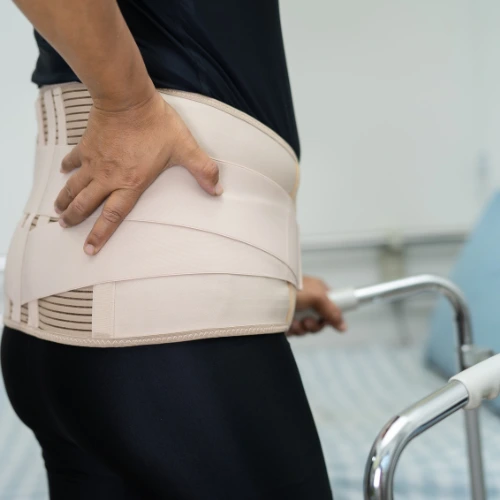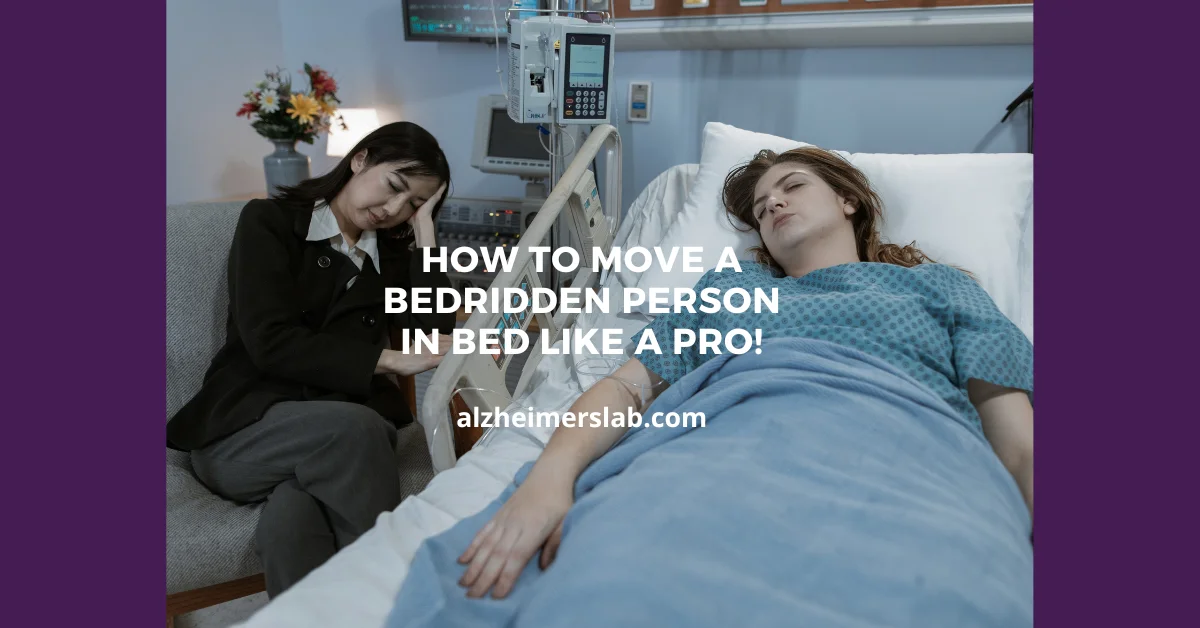How to Move a Bedridden Person in Bed Like a Pro!
Have you ever faced the challenge of moving a loved one who is bedridden? It can be a daunting task, but fear not! With the right techniques and equipment, you can make this process easier and more comfortable for both you and your loved one. In this blog post, I will share with you some tips on moving a bedridden person in bed, using some essential tools like a transfer sling or a patient lift assist belt. So, let’s get started!
Getting to know the Importance of Proper Techniques
Moving a bedridden person requires utmost care and consideration. Improper techniques can not only cause discomfort and pain to your loved one but also put you at risk of injury. Before we delve into the specifics, it’s crucial to understand the significance of using proper techniques.
When moving a bedridden person, always communicate with them and explain what you’re going to do. Assure them that you will proceed gently and respect their comfort throughout the process. Never rush; take your time and proceed with patience.
Utilizing a Transfer Sling: The Basics
A transfer sling is a valuable tool that assists in moving a bedridden person with ease. It is designed to be placed underneath the individual to provide support and leverage during transfers. Transfer slings come in various shapes and sizes, and they can be made of different materials, such as nylon or mesh.
To use a transfer sling effectively, follow these steps:
- Position the sling correctly: Slide the transfer sling underneath the person while ensuring it reaches from their shoulders to their hips.
- Secure the sling: Fasten the sling securely to the patient lift or hoist device.
- Lifting with care: Engage the lift or hoist to raise the bedridden person slightly off the bed. Always check for proper support and ensure the person is comfortable before proceeding further.
- Move gently: Slowly move the person to the desired position, be it to the side for a bed change or to a seated position for daily care.
Remember, practice makes perfect. Familiarize yourself with the transfer sling and hoist to build confidence in using them effectively.
The Patient Lift Assist Belt: A Handy Alternative

Another excellent tool for moving a bedridden person is the patient lift assist belt, also known as a gait belt. Unlike a transfer sling, this belt is designed to wrap around the patient’s waist and is useful for shorter transfers or for assisting them to sit up in bed.
Here’s how to use a patient lift assist belt safely:
- Prepare the bedridden person: Help the person sit up if possible or roll them gently to their side.
- Position the belt: Place the belt around their waist, ensuring it’s snug but not too tight. Make sure the buckle is secure.
- Use proper body mechanics: Stand facing the person with your feet shoulder-width apart, and bend your knees slightly. Keep your back straight and engage your leg muscles while maintaining a stable stance.
- Steady the person: With one hand on the patient’s back and the other on the front of the belt, gently guide them to the desired position.
- Assist, not lift: Remember, the patient lift assist belt is meant to aid the person’s movement, not to bear their entire weight. Always ensure there is enough support and stability during transfers.
Preventing Bedsores and Promoting Comfort

Prolonged bed rest can lead to the development of painful bedsores, also known as pressure ulcers. To prevent these, it’s essential to provide regular repositioning and skin care for bedridden individuals.
Repositioning Tips:
- Change the person’s position every 2 hours to relieve pressure on specific areas.
- Use pillows or foam wedges to support bony prominences like heels, hips, and elbows.
Skin Care Tips:
- Keep the skin clean and dry.
- Apply moisturizer to prevent dryness and chafing.
- Check for redness or signs of skin breakdown regularly.
Remember, preventing bedsores is vital for your loved one’s comfort and overall health.
Ensuring Proper Communication and Emotional Support
When moving a bedridden person in bed, communication is key. Always talk to your loved one throughout the process, explaining each step and asking for their input whenever possible. This not only helps them feel more in control but also builds trust and strengthens your bond.
Remember, being bedridden can be emotionally challenging for the individual, leading to feelings of frustration, helplessness, or even depression. Offer emotional support and reassurance during transfers, making sure they know you are there for them. Small gestures like holding their hand or offering comforting words can go a long way in boosting their spirits.
Teamwork and Proper Training

Moving a bedridden person can be a two-person job, especially if they are larger or require more assistance. If possible, have a family member or caregiver help you during transfers. This not only makes the task physically easier but also provides an extra set of eyes and hands for added safety.
Moreover, if you are unfamiliar with using transfer slings or patient lift assist belts, consider seeking professional training. Many healthcare facilities and organizations offer training sessions on safe patient handling and transfer techniques. Being properly trained will boost your confidence and ensure the well-being of your loved one.
Being Mindful of Environmental Factors
When moving a bedridden person in bed, it’s essential to consider the environment. Ensure there are no obstacles around the bed that could hinder the transfer. Clear the area of any cords, rugs, or clutter that might cause accidents during the process.
Moreover, maintain a comfortable room temperature, as extreme heat or cold can make the transfer uncomfortable for your loved one. Remember to provide adequate lighting, especially during nighttime transfers, to avoid accidents.
Conclusion
Caring for a bedridden loved one can be both challenging and rewarding. By mastering the art of moving a bedridden person in bed using transfer slings or patient lift assist belts, you can ensure their comfort and safety while easing the strain on your body.
Now that you have learned some valuable tips and techniques, I’d love to hear from you! Do you have any additional suggestions or personal experiences to share about moving a bedridden person?
Let’s continue the conversation in the comments section below. Your insights might help others facing similar challenges. Together, we can make the journey of caregiving a little smoother and more compassionate.

